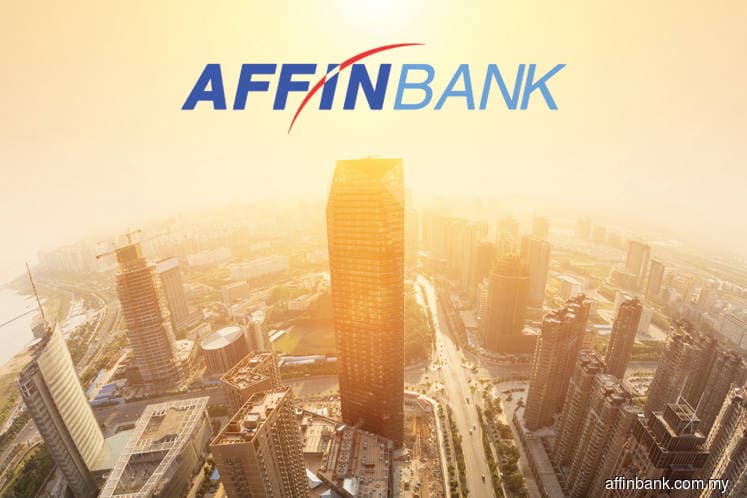
This article first appeared in The Edge Malaysia Weekly on April 23, 2018 - April 29, 2018
AFFIN Bank Bhd’s asset quality has been a thorn in its side, having deteriorated sharply last year as indicated by its gross impaired loan (GIL) ratio increasing 80 basis points — by far the biggest quantum of increase than in any of the local banks.
Controlled by Lembaga Tabungan Angkatan Tentera, the country’s second smallest banking group saw its GIL ratio worsen to 2.5% at the end of 2017 — a sharp deviation from the banking industry’s 1.53% — from 1.7% a year earlier.
In contrast, the industry’s GIL ratio improved from 1.61% at end-2016.
Nevertheless, group CEO Kamarul Ariffin Mohd Jamil tells The Edge that he expects the situation to improve this year. He says the rise in Bank Affin’s GIL ratio last year was mainly due to problems with two accounts in the real estate and oil and gas (O&G) sectors.
“The rise in the GIL ratio is mainly attributable to two accounts that are classified as impaired despite [their] performing status. Our decision to classify the loans as impaired mainly arises from the fact that there is a shortfall in the cash flow to settle the loans at the end of maturity. These accounts are fully collateralised, and we expect their cash flow to improve and [have them] reclassified back to performing by the end of 2018,” he says via email.
Kamarul expects the ratio to improve this year. He points out that, excluding the two impaired accounts, Affin Bank’s GIL ratio would have been about 1.46% last year, below the industry average.
“The GIL ratio is expected to trend downward [this year], and we do not expect any significant provisions. We expect gross credit cost to be about 30bps,” he says.
Still, some analysts point out that while Affin Bank is very likely to show some improvement in its GIL ratio, it will not be out of the woods yet as the entire industry is susceptible to higher provisions this year.
CIMB Research, for example, projects that the industry’s GIL ratio will rise to 1.8% at end-2018 from 1.5% at end-2017. “We think that the soft spot for banks’ asset quality is their loan exposure to O&G companies and property developers,” it says in a sector report.
While a few other local banking groups too saw their GIL ratios inch up last year, the quanta of increase were relatively small.
At 2.5%, Affin Bank’s GIL ratio last year was better only than that of CIMB Group Holdings Bhd (3.4%). CIMB Group’s GIL ratio had risen, albeit by just 10bps, due to higher impaired loans in its regional markets of Thailand and Singapore.
The deterioration in Affin Bank’s asset quality last year came amid strong loan growth of 7%, which was well ahead of the industry’s pace of 4.1% and one of the best among the local banks. This was mainly because of solid growth in the bank’s residential mortgages.
Its largest loan segment, however, is automotive loans, which accounted for 27.6% of its total gross loans of RM46 billion. The bank is understood to be focusing on borrowers purchasing mid-to-luxury vehicle brands, as they are deemed to be financially healthier and less likely to default.
Moving forward, the bank is focused on driving loans in the residential mortgage as well as automotive and SME segments.
According to analysts, Affin Bank is striving for a loan portfolio balance of consumer (40%), corporate (40%) and SME (20%) by 2020. In FY2017, this stood at 49%, 43% and 8% respectively.
What is more interesting, though, is that it expects its Islamic financing proportion to increase to 40% in 2019 from 34% in 2017.
“We are positive on the rebalancing of its Islamic portfolio as margin compression in Islamic financing is less than conventional ones, with [its] Islamic profit rate stable in the last two years at 1.9%,” Kenanga Research says.
Last year, Affin Bank reported a net profit of RM417.9 million. As it had implemented an internal reorganisation then, the earnings cannot be compared with the previous year’s. (As part of the reorganisation, the financial holding company, Affin Holdings Bhd, was collapsed into its banking operating entity, Affin Bank. Key entities in the group, including Affin Hwang Investment Bank, were transferred from Affin Holdings to Affin Bank only from Oct 16 last year.)
For comparative purposes, assuming there had not been a reorganisation, the group’s net profit including minority interest would have seen a 7.7% decline year on year to RM534.9 million, says MIDF Research in an April 3 report following a company visit.
The decline was due to higher operating expenditure stemming from the implementation of a voluntary separation scheme last year as well as higher provisions. The bank incurred a cost of RM46.5 million from the exercise, under which 327 employees were released.
Save by subscribing to us for your print and/or digital copy.
P/S: The Edge is also available on Apple's AppStore and Androids' Google Play.